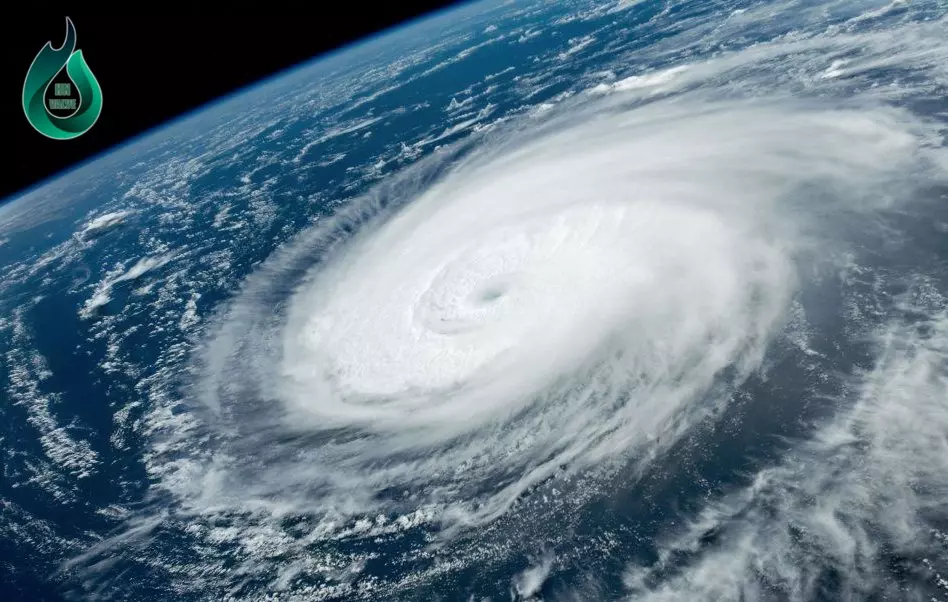Atmospheric pressure
Atmospheric Pressure – Have you ever heard of this term before? If you are familiar with the concept but still uncertain about it, in this article, we will explore together its nature, causes, significance, and more.
Understanding Atmospheric Pressure
What is Atmospheric Pressure?
Atmospheric pressure, also known as air pressure or pressure of Earth’s atmosphere, is the force exerted by the atmosphere on the Earth’s surface or on the surface of any object existing within the atmosphere, per unit area. It is a result of Earth’s gravitational pull, acting on the layer of air surrounding the Earth (the atmosphere).
The unit commonly used to measure atmospheric pressure is “atm,” which is an abbreviation of “atmosphere.” However, in some cases, other units are also encountered to measure atmospheric pressure, such as PSI (pound per square inch), kilopascal (kPa), hectopascal (hPa), millimeters of mercury (mmHg), etc.
Atmospheric pressure at a specific location can vary based on several factors such as weather conditions, altitude, and geographical location. However, under standard conditions at sea level, atmospheric pressure is conventionally set to 1 atm (atmosphere).
1 atm is equivalent to:
About 760 mmHg.
About 1013.25 hPa (hectopascal).
About 101.325 kPa (kilopascal).
About 14.7 psi (pound per square inch) or lbs/in² (pound per square inch).

Causes of Earth’s Atmospheric Pressure
Earth’s atmosphere consists of overlapping layers. It contains about 21% oxygen, 78% nitrogen, 0.9% argon, and the rest comprises other gases (methane, moisture, neon, etc.) and impurities.
Earth’s atmosphere extends up to the exosphere (according to NASA), with a distance of 6,200 miles (10,000 km). However, there are different opinions about the exact boundary of the atmosphere. Nevertheless, most scientists agree that the Kármán line, situated approximately 62 miles (100 km) above sea level, marks the transition between Earth and space. As most of the atmosphere lies below this line, it is considered an appropriate altitude to define the boundary between Earth and space.
All components in the atmosphere are quite light, but they do possess a certain mass and are subject to the Earth’s gravitational pull. As a result, the molecules in the air are in constant chaotic motion.
When we combine all these forces and calculate per unit area, we get the atmospheric pressure acting on the Earth’s surface and the surface of objects existing within the atmosphere.
Formula for Calculating Atmospheric Pressure
In practice, to determine the air pressure at a particular location on Earth, specialized measuring devices are commonly used, with the barometer being the most popular one.
As atmospheric pressure changes due to various factors, in cases where high precision is required, it is measured by meteorological stations using various devices that collect data on temperature, altitude, humidity, wind speed, etc., combined with complex equations depending on specific conditions.
To simplify the calculation of atmospheric pressure, the basic formula is:
P = ρ * g * h
Where:
- P is the atmospheric pressure (usually measured in pascals – Pa).
- ρ is the air density at sea level (usually measured in kilograms per cubic meter – kg/m³).
- g is the acceleration due to gravity, approximately 9.81 (usually measured in meters per second squared – m/s²).
- h is the height above sea level (usually measured in meters – m).
The formula assumes that the air density and gravitational acceleration remain constant with altitude, and this applies to standard conditions within a range from sea level to an altitude of about 10,000 meters.
However, as you go higher, both altitude and air temperature change, causing the air density to no longer remain constant.
Therefore, if you want to calculate atmospheric pressure at different altitudes, you need to use more complex formulas like the barometric equation, the ideal gas law equation for the atmosphere, or rely on real measurement data from meteorological stations.
Factors Influencing Atmospheric Pressure
Altitude Above Sea Level
As you go higher, atmospheric pressure decreases. When ascending 100 meters in the atmosphere, the pressure decreases by a certain amount. Specifically, according to the standard model, the pressure decreases at a rate of about 1 hectopascal (hPa) for every 8-9 meters of altitude gained.
If we approximate the calculation, when ascending 100 meters, the pressure will decrease by approximately:
ΔP ≈ 100m * (1 hPa / 8m) ≈ 12.5 hPa.
Note that this value may vary slightly depending on real conditions and topography, but for typical estimates, this assumption is suitable and provides a close approximation of pressure reduction with altitude.
Altitude plays a significant role in atmospheric pressure. Atmospheric pressure decreases with altitude, meaning that as you go from the ground to higher altitudes, atmospheric pressure will decrease.
The primary reason for the decrease in atmospheric pressure with altitude is the diminishing gravitational force of the Earth. The gravitational attraction between the Earth and the molecules in the atmosphere is inversely proportional to the distance (the higher the altitude, the greater the distance).
Specifically, the gravitational force between two objects is calculated by the formula:
F = G * (m1 * m2) / r^2
Where:
- F is the gravitational force between two objects (the straight line between them).
- G is the gravitational constant, also known as Newton’s gravitational constant, with an approximate value of G ≈ 6.67430 x 10^-11 N.m^2/kg^2.
- m1 and m2 are the masses of the two objects (in kilograms).
- r is the distance between the two objects (in meters).
The gravitational force between two objects is directly proportional to the product of their masses and inversely proportional to the square of the distance between them. This means that the gravitational force increases when the masses of the objects increase or when the distance between them decreases.
Furthermore, as the Earth’s gravitational pull diminishes at higher altitudes, the air becomes less dense, leading to a decrease in the compressed air’s pressure.

Weather Phenomena
Weather phenomena have a significant impact on atmospheric pressure, or to be more precise, the changes in atmospheric pressure and weather phenomena are closely related and mutually influential.
Weather phenomena such as wind, storms, heatwaves, etc., all affect atmospheric pressure, each to varying degrees.

Temperature
Temperature is one of the factors that influence atmospheric pressure, and they are inversely proportional to each other. In a region where the temperature increases, the atmospheric pressure decreases, or in other words, areas with high temperatures have lower atmospheric pressure compared to areas with low temperatures.
The reason is that air tends to expand in volume as the temperature rises. So, with the same amount of air, its occupied volume increases, leading to a decrease in density and consequently lowering the atmospheric pressure.
Geographical Location
The influence of geographical location on atmospheric pressure is the synthesis of all the factors mentioned above. As you know, the surface of the Earth is immensely vast and uneven.
Between regions with different elevations and climatic conditions, atmospheric pressure is affected.
Atmospheric Pressure Measuring Instruments
The device used to measure atmospheric pressure, widely known, is the barometer (barometer).
The barometer was invented in the 17th century and is used to measure and record atmospheric pressure. There are two common types of barometers: mercury barometer and aneroid barometer.
- Mercury Barometer: The mercury barometer uses a column of mercury to measure pressure. In this barometer, a long glass tube is inverted over an open mercury-filled glass dish, and a portion of the tube dips into a container of mercury. Atmospheric pressure acts on the glass surface inside the tube and pushes the mercury up the tube. The height of the mercury column in the tube changes depending on atmospheric pressure and can be read on a scale on the side of the tube.
- Aneroid Barometer: The aneroid barometer uses mechanical devices to measure pressure. Some types of aneroid barometers use springs or levers to record changes in atmospheric pressure on a scale.
Barometers are essential tools in meteorology and are used for weather forecasting, meteorological and climate research, and in aviation and altimetry applications.

Meaning of Atmospheric Pressure
Atmospheric pressure holds significant importance in various fields, including meteorology, geography, aviation, agriculture, medicine, industry, and many others. It exerts a force on all surfaces of objects existing on Earth.
The significance of atmospheric pressure can be understood through the following examples:
- Weather Forecasting: Atmospheric pressure is one of the crucial factors in weather forecasting. Its changes can influence weather phenomena such as storms, strong winds, and rainfall.
- Aviation: In the aviation industry, atmospheric pressure needs to be monitored to ensure safety and efficiency during flights.
- Medicine: Atmospheric pressure also affects human health. Rapid changes in altitude (e.g., during take-off and landing in an aircraft) can cause pressure-related effects on the human body, necessitating safety limits.
- Industry: Atmospheric pressure also impacts the environment in various industrial processes, such as metallurgy and manufacturing.
In summary, atmospheric pressure plays a crucial role, affecting various human activities and all types of living organisms on Earth. It is a significant parameter in understanding and forecasting weather, studying meteorology and climate, and ensuring safety and efficiency in aviation, space exploration, and other industries.
Do Human Activities Affect Atmospheric Pressure?
Human activities have significantly impacted Earth’s atmospheric system, including various factors such as temperature, composition, and pressure. Notably, these human-induced effects on the atmosphere have had adverse consequences.
Here are some key impacts of human activities on atmospheric pressure:
- Climate Change and Greenhouse Effect: Human activities, such as fossil fuel combustion, agriculture, and industry, lead to greenhouse gas emissions (CO2, CH4, and N2O). These gases trap heat in the atmosphere, causing global warming. Temperature changes, in turn, influence atmospheric pressure and contribute to unstable weather patterns.
- Deforestation and Urbanization: Deforestation is occurring worldwide, altering the surrounding environment and affecting air circulation and atmospheric arrangements, leading to changes in atmospheric pressure in specific regions.
- Transportation: The increase in vehicles using internal combustion engines contributes to higher greenhouse gas levels in the atmosphere. Dust and particulate matter from transportation activities can increase air density, potentially influencing atmospheric pressure in urban areas.
- Industry and Manufacturing: Similar to transportation, industrial and manufacturing activities generate significant amounts of dust and particulate matter in the air. Large quantities of these pollutants can impact atmospheric pressure.
These activities and many others can cause not only changes in atmospheric pressure but also alterations in the environment and overall climate of Earth. To mitigate the negative impacts on the atmospheric system, environmental protection measures should be implemented, such as reducing greenhouse gas emissions and promoting the use of renewable energy sources.
Conclusion
Atmospheric pressure influences life and natural phenomena on our planet. It varies with geographical location, altitude, weather, and other environmental factors.
Under standard conditions, atmospheric pressure at sea level is equivalent to 1 atm, which is approximately 1013.25 hPa.
Atmospheric pressure plays a crucial role in various fields, including meteorology, geography, aviation, space exploration, scientific research, and industry. Notably, many human activities have led to changes in atmospheric pressure, such as deforestation, vehicle emissions, and pollutants from industrial plants.
The fluctuations in atmospheric pressure will inevitably lead to climate change. Therefore, to protect the living environment of humans and all living beings on Earth, we should limit activities that negatively impact the environment and contribute to changes in atmospheric pressure.
